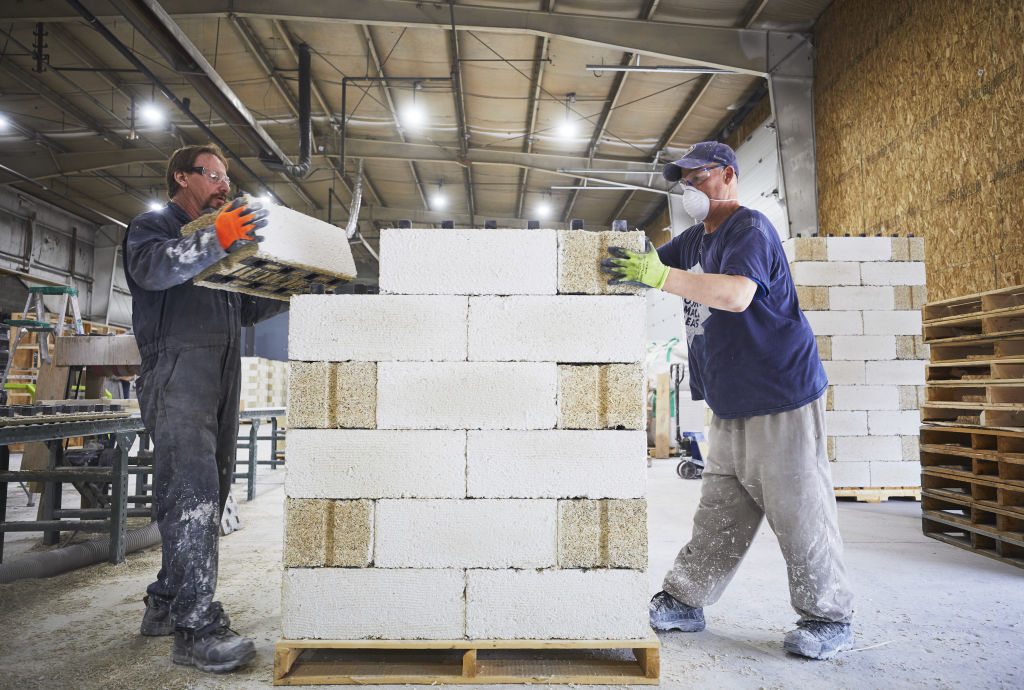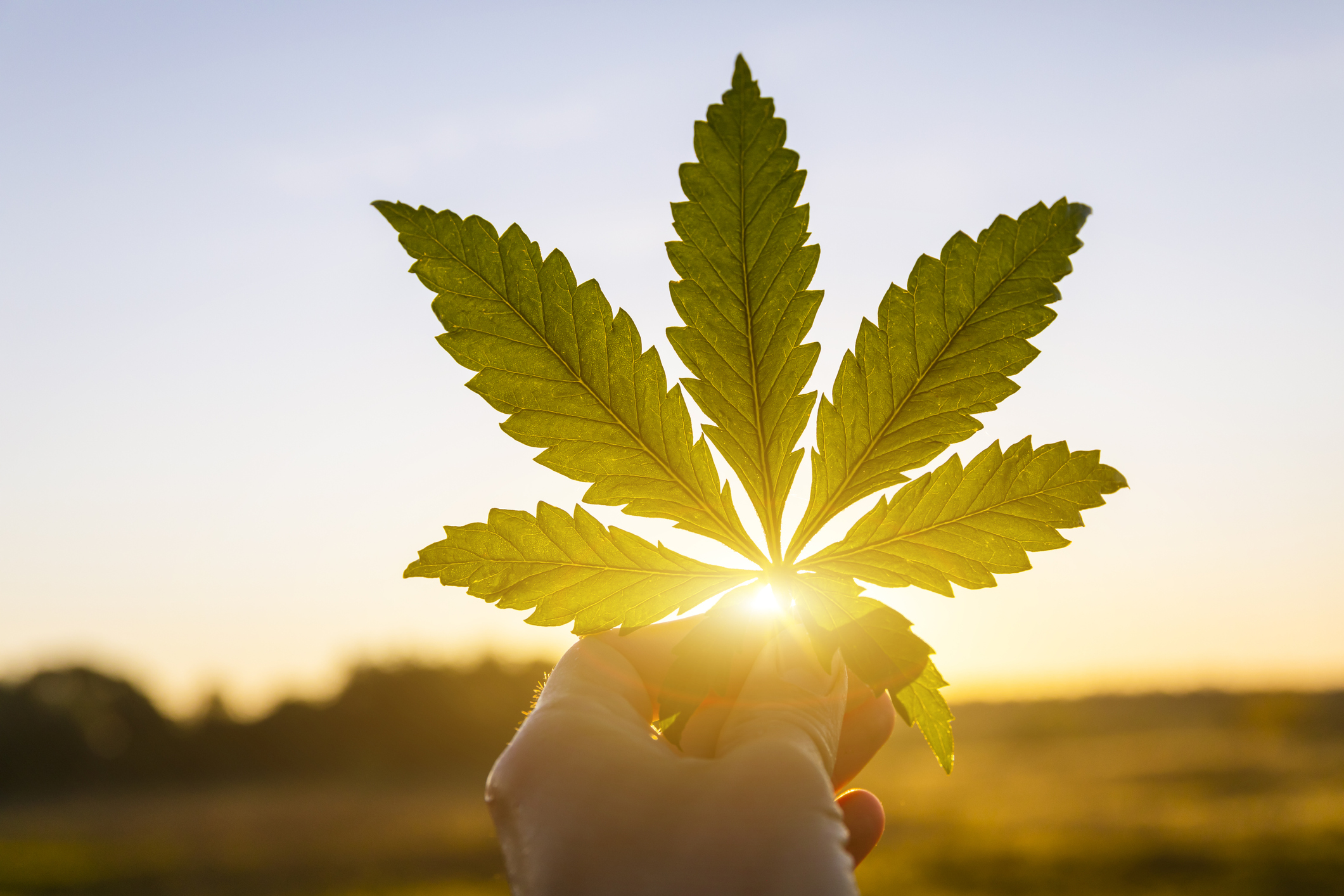Hemp was going to save the world, or so the Baja hoodie-wearing hippies hanging out at California’s Venice Beach back in the ‘80s would have it. The fast growing, fibrous stalks could be used for insulation, rope, construction, and fabric—even the soft striped pullovers popular with surfers at the time. The founding fathers grew it, they claimed, and the first two iterations of the United States’ Constitution were drafted on hemp paper. The oil-rich seeds were good in granola, high in protein, and perfect for beauty products from shampoos to facial creams. When soaked and pressed, the seeds make a tasty milk, far creamier than soy. The plant was touted as a climate warrior as well: able to absorb massive amounts of CO2 out of the atmosphere and suck toxins from the soil while requiring little water, no pesticides or herbicides, and few fertilizers to flourish. It could be used as a substitute for fossil fuels and engineered into compostable plastics.
There was only one problem: as a close cousin of marijuana, hemp farming had been banned in the United States as part of the crackdown on illicit drugs. The solution, hemp advocates said, was to legalize weed. As a ploy to decriminalize a popular drug, it was pretty transparent. But now that marijuana can be legally used in 37 states, and hemp farming—at least the non-psychoactive kind—is legal in all of them, does the miracle weed deliver on its fevered sales pitch?
Well, not exactly, says Jeffrey Steiner, director of the Global Hemp Innovation Center at Oregon State University. “From the standpoint of hemp being this miraculous, environmentally friendly crop that is going to solve all our problems, it’s folklore.” The fact that hemp hasn’t lived up to its promise has as much to do with overhype—it’s still just a plant, even if it does have several unique qualities—as it does the complexities of the U.S. agricultural system, the long shadow of past restrictions, current regulatory laws, and Big Cotton.
Marijuana and hemp were effectively made illegal in the United States in 1937, and banned outright in 1970, even though industrial hemp has about as much in common with ganja as a brussels sprout does broccoli. Which is to say it’s the same species—Cannabis sativa—but maximized for different qualities: stems and seeds for industrial applications, and flowers heavy with the psychoactive tetrahydrocannabinol (THC) to achieve a potent high. But in 2018 a new provision was added to the congressional farm bill, which is reauthorized every five years, allowing hemp to be grown as long as it contains no more than 0.3% THC. This opened up a source for the plant’s non-psychoactive cannabidiol (CBD) compounds, widely promoted for health and wellness benefits, as well as an opportunity to put hemp’s long touted promises into practice.

In many ways, hemp does deliver. The high protein seeds are used in animal feed, and the fibrous stalks are blended with lime to make hempcrete—a new building material that promises to replace carbon spewing concrete with a carbon sequestering, renewable alternative. Under certain, but not all, growing conditions, hemp requires less water and land than textile rival cotton, and it is also good at phytoremediation, meaning that it can draw toxins such as heavy metals and even radioactive compounds out of contaminated soils. But then, so can tomatoes and sunflowers. And that’s the problem. Hemp does a lot of things that other plants do, and may even do some better, but because it was illegal for so long, scientists haven’t been able to adequately research hemp’s properties or develop its potential.
That also means that some of the more miraculous hemp attributes—that it is carbon negative, for example, storing 1.63 tons of CO2 per one ton of hemp grown (equivalent to the amount released by driving 3,670 miles)—are based on very little data. Hemp is a fast-growing crop, which would mean a faster carbon uptake than, say, a tree. But that alone is not enough to assess its carbon sequestration abilities. According to Steiner, there are very few peer-reviewed studies quantifying the carbon impact of hemp, and even those are based on modeling, not real-world research that could be applied across the entire spectrum of hemp agriculture. “We need an entire lifecycle analysis before we can know how much this crop can actually sequester.”
The same goes for claims that it doesn’t need pesticides or herbicides. Hemp was only planted in the U.S. starting in 2019, after the law changed. Agricultural scientists haven’t seen enough harvest cycles to know how pests, diseases, and weeds will impact the crop, says Steiner. Indeed, that first year, there was barely any pest damage. But once the bugs figured out there was something new on the block worth eating, they dove right in. Subsequent crops have been plagued by corn borer moths and beet curly top virus, common agricultural pests, but there aren’t any hemp-approved, commercially available pesticides or herbicides because scientists haven’t had time to develop them. And while crops grown for marijuana dispensaries benefit from a higher price point that allows for organic farming practices that avoid pesticides, industrial hemp production is less likely to go in that direction.
The nation’s major crops—cotton, wheat, corn, and soy—have benefitted from decades of scientific research and development. The post-World War II era ushered in a green revolution that nearly doubled productivity with the introduction of advanced breeding techniques, fertilizers, pesticides, and herbicides. Hemp missed that bus, says Lawrence Smart, a hemp specialist and professor at Cornell University’s School of Integrative Plant Science. “There’s certainly an enthusiastic population that believes that hemp is somehow a better plant than every other crop that we’ve been studying for decades. But compared to soybeans or corn or wheat, we know virtually nothing about how to optimize its growth or maximize its use.”

Smart and Steiner, who head two of the biggest academic agricultural programs in the U.S. on hemp, have only been studying it since it was made legal five years ago. Both say that hemp has a lot of catching up to do before it can start competing with more established crops, even if it does have more desirable qualities.
Take hemp fabric, for example. Lustrous and durable, it has been woven into textiles for millennia, but it has never seen the massive industrialization process that turned cotton into the world’s most popular natural fiber, largely because its prohibited status curtailed innovations in hemp growing and processing. This makes cotton our default material—and our systems are now built around that. A modern cotton gin in the United States can clean, comb, and process a 480-pound bale of fiber every 90 seconds. Hemp is still largely processed by hand, at 2G speeds compared to cotton’s 5G, says Steiner, equating it to the difference between advancements in cellular speeds. “Hemp production needs to get up to at least 3G before it can compete with other natural fibers.”
That will require the development of modern processing equipment, as well as industrial-scale mechanized farming tools. And while hemp-evangelists tout the usefulness of the whole hemp plant from stalk to seed, cotton production is virtually waste free as well, with seed oil going into food production, seed mash to animal feed, stems to paper mills, and stalks to biofuels. The biggest difference is that cotton already has those markets in place, and the hemp industry still has to develop them.

Smart holds that hemp fiber’s construction applications have a lot of promise, especially combined with its ability to sequester carbon. He has worked with companies that are making prefabricated hemp cubes to replace concrete construction blocks, and others that are substituting hemp fibers for blown-in wall insulation. Locking that sequestered CO2 into construction projects that will last 100 years or more is a climate win, he says, but more needs to be done to keep prices down (hempcrete costs one-and-a-half times as much per square meter as regular concrete), while encouraging farmers to grow it. “Everyone talks about how you can make 25,000 things out of hemp, but it’s got to be equivalent [to other products] in the marketplace for people to adopt it. And it’s got to be economically viable.”
The fact that hemp is still tainted by its illegal past means it is not. In most states, industrial hemp growers are regulated the same way as those growing high-THC marijuana crops. In New York state, where Smart runs his program, hemp farmers must pay $500 for a three-year license and register with their local police station where they will be fingerprinted and go through an FBI background check. Then they have to hire testing companies to certify that their crops have less than 0.3% THC, a process that can cost hundreds of dollars or more, depending on the size of the farm. For a high value product, it might be worth the expense and the extra paperwork burdens, says Smart, but growing hemp for fiber, no matter how much of a climate difference it could make, doesn’t seem worth it.
That could begin to change this fall when the U.S. farm bill is up for its five-year reauthorization. It’s an opportunity, says Smart, for hemp to be fully decoupled from marijuana crops so that it can compete with other products. The alternative would be to legalize marijuana at the federal level, reducing the burden on farmers no matter what kind of cannabis sativa they are growing. Maybe the aging hippies were right after all. For hemp to reach its full potential, marijuana still needs to be decriminalized.
More Must-Reads from TIME
- Cybersecurity Experts Are Sounding the Alarm on DOGE
- Meet the 2025 Women of the Year
- The Harsh Truth About Disability Inclusion
- Why Do More Young Adults Have Cancer?
- Colman Domingo Leads With Radical Love
- How to Get Better at Doing Things Alone
- Michelle Zauner Stares Down the Darkness
Contact us at letters@time.com
